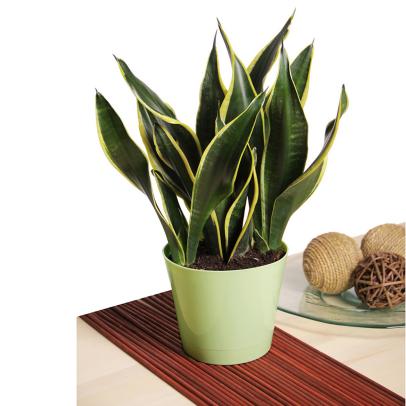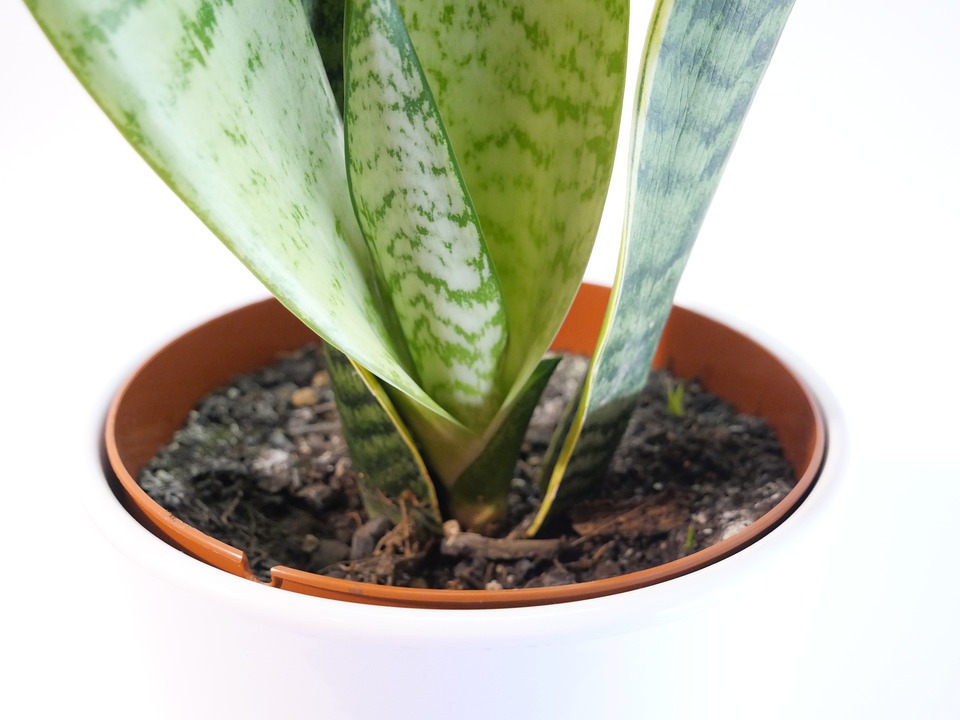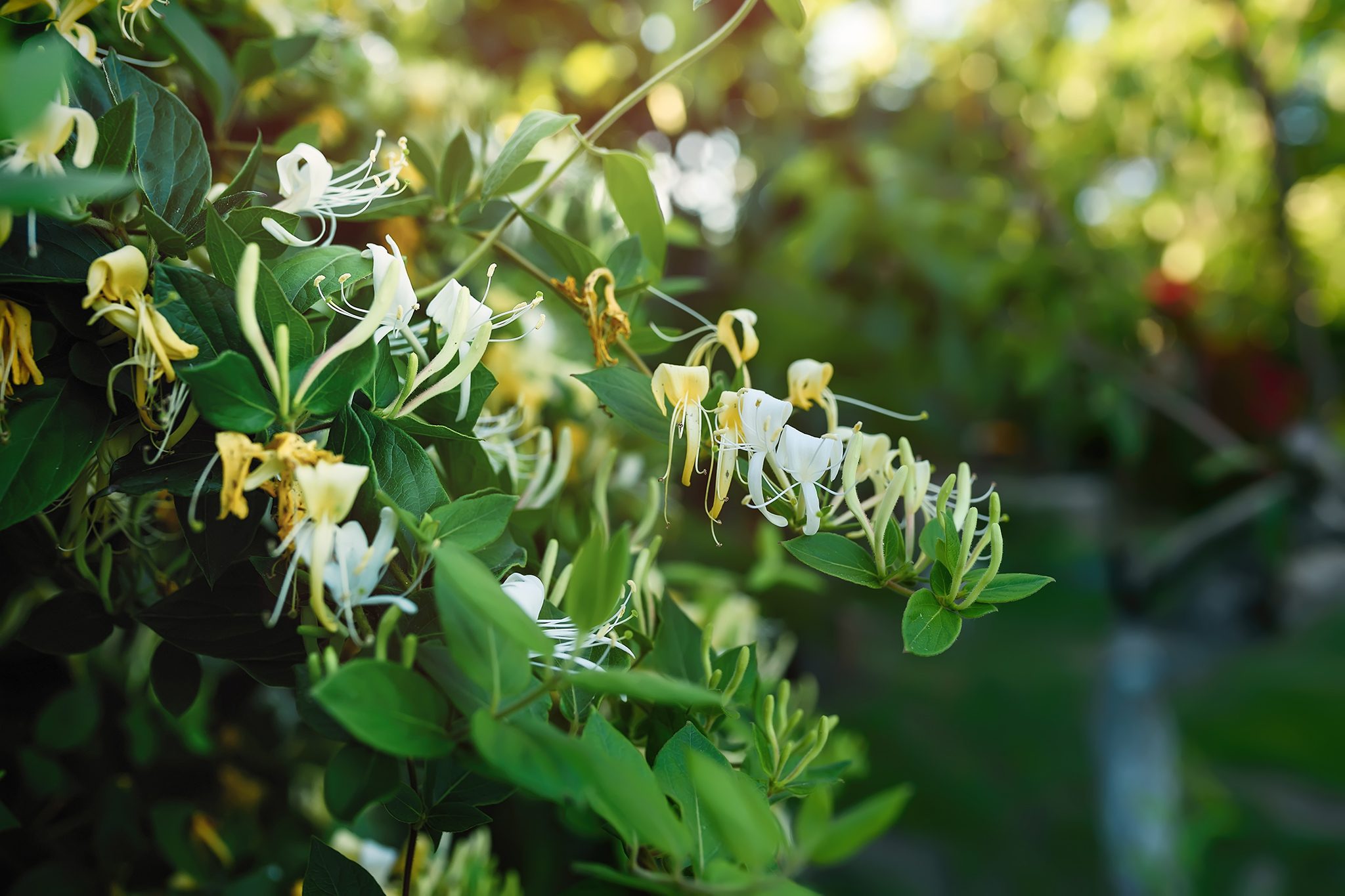Sansevieria trifasciata, also known as Sanseveria, is a hardy, evergreen herbaceous perennial with fleshy, spotted leaves native to West Africa and Asia.
Sanseveria is also known as “snake plant” in English because of its distinctive leaf shape. In Italy, it is also called “mother-in-law tongue,” probably because of the pointed tips of its leaves. The name Sanseveria dates back to 1765.
From rhizomes growing under the soil, the leaves, which are distinctive in color and shape, grow vertically, reaching heights from 30 cm to over 1 m, depending on the species. Some types of sansevieria have leaves that form rosettes, hence the name “bird’s nest”. The shape varies from species to species, but the color of the leaves is the same: dark green with light streaks and golden stripes at the edges.
If well cared for and placed in the proper position, i.e., in a bright environment and not in direct sunlight, it will flower, but it is infrequent to grow it indoors. The flowers are clustered in greenish-white corms and have a pleasant sweet fragrance.
Sansevieria is a hardy, light-loving plant, but the shade does not seem to be a problem as it only slows growth. Since it is native to the tropics and does not like the cold, it is ideal for flat roof. We recommend putting it outside only during the spring and summer months.
Watering depends on the season, once every two weeks in summer, once every three weeks in winter, and during the cold months up to February; the sansevieria should be placed in the shade below 20 degrees Celsius to go into a slight growth dormancy.
Propagation of Sansevieria
The easiest way to propagate sansevieria is through foliar sprays. Select a leaf and cut it off at the base with sharp scissors. Next, cut the leaves into 3-4 cm lengths. Afterward, bury the segments and leave them moist, watering them regularly.
It is very important that the leaves are pricked in the same direction they are growing; if they are planted in the opposite direction, they will not root and rot.

Benefits of Sansevieria
The benefits provided by sanseveria are ideal.
- It releases oxygen at night.
- It purifies the environment.
Scientific studies have shown that the air in our homes is also very polluted, often even more so than the air in the streets.
The main causes of this are, firstly, external factors such as the house’s location, and secondly, the use of deodorizers, detergents, etc., and everyday activities such as cooking, which produce a lot of gases increase the concentration of carbon monoxide in the air.
Thanks to these plants, we can fight electrosmog and absorb formaldehyde, but not only that, the sansevieria’s ability to generate oxygen at night makes it the perfect plant for any room in the office or home.
Indoor Decoration
With its gorgeous foliage, the mother-in-law tongue is an excellent addition to any interior. A few pots on a shelf or coffee table would add liveliness and a pop of color to a room.
These various snake plants will also look great dressed up on wood furniture. The dark green color of the leaves of these plants contrasts with the light wood color of the furniture in a light space, creating a very natural and attractive visual impact.
Instead of a simple staircase, you can completely transform your staircase by the pots of snakeplants arranged on the steps. Snakeplants can tolerate low light, so they can be placed in a corner of the house, as in staircase.

Do you like this plant? Share your thoughts with us in the comments below!




